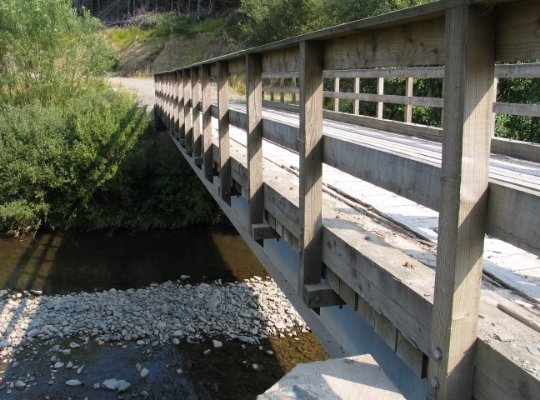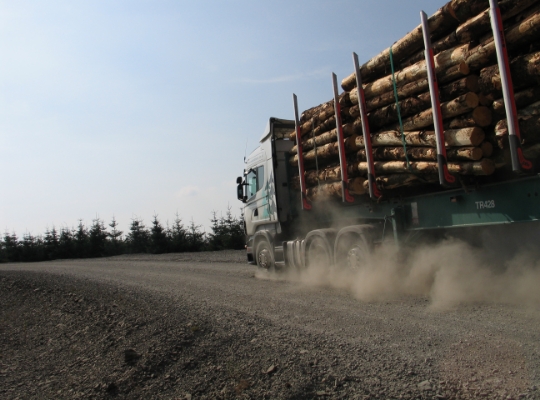Adapting infrastructure
Forest infrastructure includes forest roads and rides, bridges, drainage systems, buildings and other facilities that enable management and access. Infrastructure plays a key role in the resilience of forests to climate change risks, such as flood water drainage and access for wildfire response.
As the climate changes the risk of damage to infrastructure will increase, including damage from extreme heat and storms. Infrastructure itself will need to be modified to continue to function, such as increasing capacity for drainage systems.
The indirect effect of adaptation measures made to woodland management which may require different infrastructure should also be considered in, e.g., increased thinning and access. The design and maintenance of forest infrastructure should take account of current and future conditions to ensure they remain suitable and durable.


Climate change impacts & adaptation measures
As the climate changes, the risk of damage to forest infrastructure will increase and adaptation measures need to be considered:
- Buildings can be damaged by projected increases in extreme heat, wind speeds and more frequent storms, which can damage roofing and cladding. Building specifications will need to accommodate these risks.
- Road surfaces will be increasingly at risk from damage by extreme heat, heavy rainfall, drought conditions, and frost. Road maintenance, design and materials selection will be increasingly important. Road washouts and bridge damage from flooding will increase, with higher capacity drainage needed.
- Windblown trees blocking roads will need to be cleared to maintain access routes.
- Wildfire can damage buildings and infrastructure. Protective areas should be created around assets, incorporating vegetation removal and deadwood management.
Infrastructure design
Infrastructure itself will need to be modified to continue to function under future climate conditions and to accommodate adapting forest management practices:
- Drainage systems will need additional capacity due to an increase in winter rainfall. Specifications will need to be modified, such as increasing the size and number of drainage culverts or adding more areas for run-off capture to reduce diffuse pollution risks.
- Forest roads may need to withstand an increase in traffic for harvesting or thinning operations, biodiversity or recreation management, or to remove damaged or diseased trees.
- To support wildfire response, the layout of the forest road network and provision of water supplies need to be considered. Turning areas, passing places, hard standings, and weight limits to accommodate HGV access will support the fire and rescue services. Water supplies include hydrants, fire ponds and fire-fighting dams. Further details about infrastructure planning for wildfire resilience and response are included in Forestry Commission Practice Guide 22: Building wildfire resilience into forest management planning.
Business risk
Impacts on infrastructure outside the forest and their impacts on forest industries should also be considered, including impacts on timber transport, power and communications networks, staff travel, and working conditions. Adaptation measures should be incorporated in business continuity plans.
Assets at risk
Utilities and infrastructure (not related to forest operations) may be located on or adjacent to forest sites, include power lines, communications networks, fuel lines, water pipes, and wind turbines. The risk to these assets from climate change impacts on the forest should be considered, and adaptation measures agreed in partnership with the provider.
For further advice see the UKFS Practice Guide ‘Adapting forest and woodland management to the changing climate’
Download the UKFS Adaptation Practice Guide
Printed copies are available to purchase from Forest Research.
"*" indicates required fields
Reducing climate change risks
The following risks may be reduced if the adaptation measure is applied appropriately:
Tools to assist decision-making
A free online tool to visualise UK climate change data, including average, minimum and maximum temperatures, rainfall, and temperature extremes. It provides indicators of risk including transport, wildfire, agriculture and river levels.


